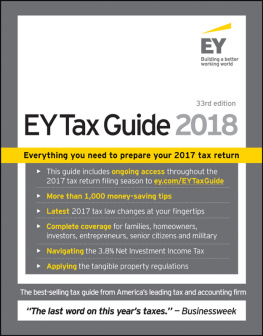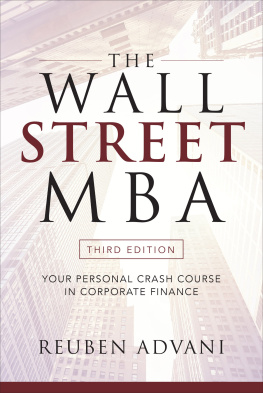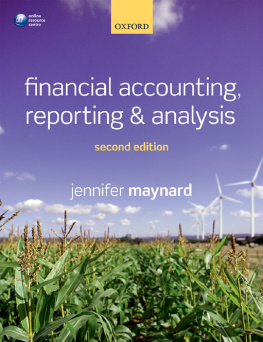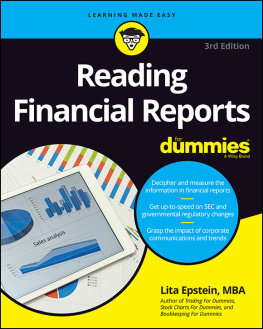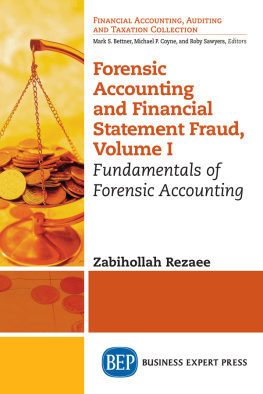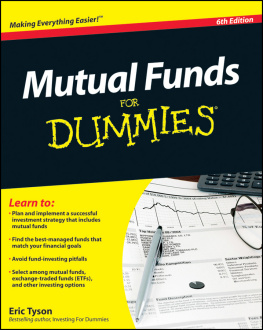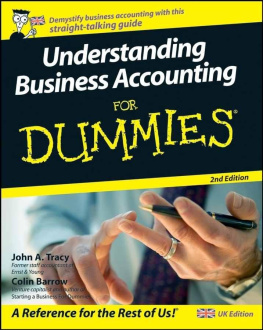COUNT DOWN
The Past, Present and Uncertain Future of the Big Four Accounting Firms
Second Edition
COUNT DOWN
The Past, Present and Uncertain Future of the Big Four Accounting Firms
Second Edition
BY
JIM PETERSON

United Kingdom North America Japan
India Malaysia China
Emerald Publishing Limited
Howard House, Wagon Lane, Bingley BD16 1WA, UK
First edition 2015
Second edition 2017
Copyright 2017 Emerald Publishing Limited
Reprints and permissions service
Contact:
No part of this book may be reproduced, stored in a retrieval system, transmitted in any form or by any means electronic, mechanical, photocopying, recording or otherwise without either the prior written permission of the publisher or a licence permitting restricted copying issued in the UK by The Copyright Licensing Agency and in the USA by The Copyright Clearance Center. Any opinions expressed in the chapters are those of the authors. Whilst Emerald makes every effort to ensure the quality and accuracy of its content, Emerald makes no representation implied or otherwise, as to the chapters suitability and application and disclaims any warranties, express or implied, to their use.
British Library Cataloguing in Publication Data
A catalogue record for this book is available from the British Library
ISBN: 978-1-78714-701-0 (Print)
ISBN: 978-1-78714-700-3 (Online)
ISBN: 978-1-78743-011-2 (Epub)
CONTENTS
PREFACE TO THE SECOND EDITION
When Emerald Publishing released the first edition of Count Down in December 2015, aiming chiefly at its core audiences in the academic and scholarly communities, it was also my desire to extend its reach more widely.
Recent months have not been happy for the Big Four accounting networks despite their extended market dominance and the growth of their combined global revenue, reaching $128 billion in the latest year making timely this revised and extended second edition:
- Deloittes Brazil firm in December 2016 incurred an $8 million penalty, the largest ever imposed by the PCAOB, and practice bars and other sanctions against twelve partners and employees, over confessed alteration of documents, false testimony, and lack of cooperation with the PCAOBs inspections and investigations. Lesser sanctions were also imposed on its firms in Mexico and the Netherlands for other PCAOB violations.
- EY in September 2016 was the target of two SEC enforcement actions, involving censures, fee disgorgements and fines of $ 4.4 million and $ 4.9 million, and practices bars against its personnel, over charges of loss of independence based on close personal relationships between engagement partners and client personnel in one case a romantic relationship and in the other, significant expenses paid for travel, entertainment, sporting events tickets, and family vacations for the client CFO and his family.
- KPMG in April 2017 fired five partners and an employee, including its Vice Chair of Audit and its head of Audit Quality and Professional Practice, over its receipt and handling of advance inspection information leaked by an employee of the PCAOB. Meanwhile in the United Kingdom, pressures remain on the Financial Reporting Council and the Financial Conduct Authority over their treatment of KPMGs role as auditor of failed bank HBOS.
- PwCs delivery of the wrong best picture envelope, and the resulting tumultuous ending to the February 2017 broadcast of the Academy Awards, evoked outbursts of public ridicule which were pale in significance compared to the potentially fatal financial impact of two multi-billion dollar lawsuits, relating to its audits of Colonial Bank and MF Global, where jury trials in process in August 2016 and March 2017, respectively, were discontinued in favor of settlements for confidential amounts.
The corrosive effects of these and other events on credibility and the public trust have left the Big Audit model increasingly fragile, yet still standing so far. While fresh issues will no doubt displace this sampling, the central issues retain their relevance and urgency, and drive the importance of their scrutiny.
Those with directly affected interests include not only the auditors, but all participants in Big Audit whose professional or business positions, activities, investments and financial security are exposed to the flaws in the structure by which the Big Four provide audit opinions on the financial statements of the worlds large public companies:
- Executive and financial leaders and the directors and audit committees of the corporate issuers.
- The community of financial information users: investors large and small, lenders, bankers, customers, and other sources of credit and capital.
- Professional standard-setters along with government agencies of oversight and law enforcement.
- And especially the accounting professionals themselves the partners and employees of the Big Four networks that dominate the sector, and their no-less-affected colleagues in the smaller firms.
Extending my appreciation for their support to the Emerald team led by Charlotte Maiorana, series editor Gary Previts of Case Western University, and my agent Carol Mann I believe in both the importance of assurance to the successful functioning of the capital markets and the necessity of full engagement by all parties in examining the challenges in todays model, and welcome this opportunity to contribute to the dialog.
Paris
May 2017
FOREWORD
At a meeting in the spring of 2001, I was taken aside by a senior partner of one of the large international accounting networks. It was, with hindsight, the quiet before the storm. Six months later, Houston-based energy giant Enron Corp. collapsed, followed rapidly by the criminal indictment and demise of the 88-year-old accounting firm of Arthur Andersen.
Here was a man at the peak of his career, with an executive position in his firm not Andersen. He had stature and recognition both in his own country and internationally, and financial security and prosperity.
My two children are both happy in college, he said. And I have achieved my goal in career guidance. Neither one is going into public accounting.
How profoundly sad, at the personal level, despite his evident satisfaction, delivered with no trace of irony. This apparently successful professional, at the top of his form, did not see the value to society of the firm to which he devoted his entire working life as worthy to pass to the next generation.
How disquieting. One of the accounting professions illustrious and respected members thought so little of its career potential that he would take satisfaction in dissuading his children from following in his steps.
A year later, I had as much reason as anyone to be dismayed at Andersens flame-out. From 1982, I had been a senior member of Andersens in-house legal group. For 16 years, I had been a partner in the uniquely successful Andersen worldwide organization, sharing fully and enjoying its prosperity and its handsome profitability.





